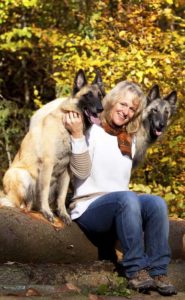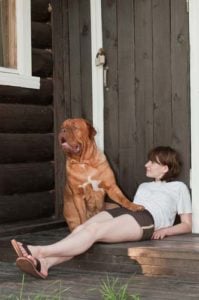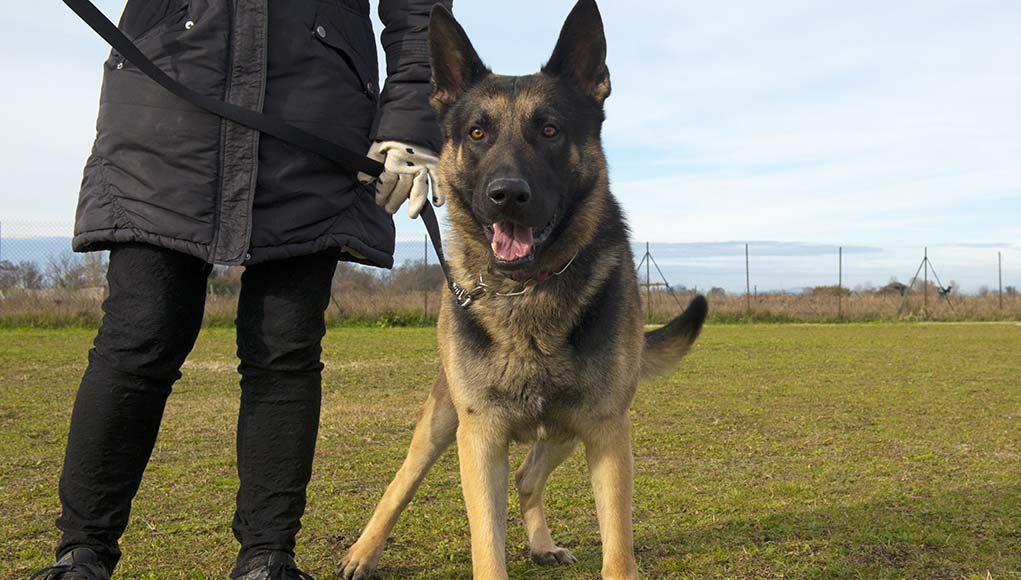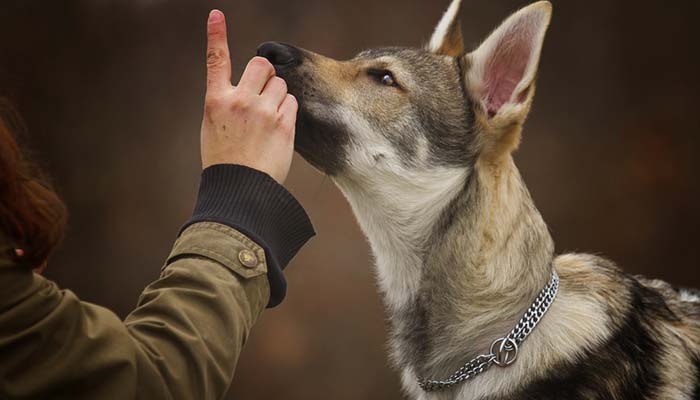We adopt dogs for many reasons: we may want companionship, a jogging partner, or someone else to take care of; we may be looking to save a life and maybe foster a dog. Some future owners, on top of all that, may also be looking for a dog for personal protection – a loyal companion to walk with at night, or guard the house.
Adopting a dog for your own protection or your home is not uncommon, but it's also not that simple. Because of people's tendency to adopt a specific type of stronger and genetically more aggressive breeds, these dogs can sometimes be a danger to themselves, other humans and animals if they aren’t raised, trained and socialized properly.
It's particularly important to careful about the adoption and training process for someone who may not handle a big, strong, potentially aggressive dog. For example, if you're a woman of small complexion looking to get a canine companion for personal protection, prepare yourself well in advance, know what to expect and be sure you can handle the dog with verbal commands alone.
ALSO READ: 14 Best Watch and Guard Dog Breeds
A Dog for Personal Protection
6 Things You Must Consider First
1. Who Really Needs a Guard Dog?
While literally anyone can keep a guard dog of their own, there are some owners who may have a serious case for considering a dog for personal protection. For example, those living in bad neighborhoods, away from quick police response and generally afraid to being unable to protect themselves.
People who are blind or deaf are more likely to fall victim to intruders too. A person who is blind may have a heightened sense of hearing, and might be able to tell if someone enters their home but there's no way of knowing if the individual has a weapon, or how close they might be in proximity. A guard dog is not only able to warn you with a bark or a growl, but they’re also able to defend you should the burglar make a move.
2. You Must Be in Control At All Times
Have you ever seen a news video of a cop pursuing a suspect with a K-9 police dog, and the K-9 finally catches up? Here's one. In most such cases, this is the point where the suspect either gives in out of fear, or – as in the video – ends up with an arm locked in the jaws of a German Shepherd. As you can see, if the dog is trained properly, he’ll let go upon command.
Sometimes, this is what might be expected from your “canine guardian.” But, because it's unlikely it'll be a police-like trained dog, there have been instances where the protective dog does not let go of the arm or the leg, staying locked in and even mauling it, severely injuring the person. An incident like this could lead to charges filed, along with the euthanization of the dog on the grounds that they are a threat to others, which isn't necessarily inaccurate if the animal does not follow commands at all times.
Before you even consider getting a dog for personal protection, make sure you’re ready to be a firm leader that can quickly and effectively neutralize any bad situation. This requires training for both you, and your protective canine like explained in this article. Even if you’ve owned a dog for years, you likely need to take a course to polish your leadership skills and handling an animal who has a specific task of protection.
3. Make Sure You Have the Right Dog to Perform the Job
 Not every canine is going to make a great guard dog, even if they’re the “correct” breed. While you technically can go to the local animal shelter to find your future companion, this probably is one of those cases where it's not always the best place for adopting a dog.
Not every canine is going to make a great guard dog, even if they’re the “correct” breed. While you technically can go to the local animal shelter to find your future companion, this probably is one of those cases where it's not always the best place for adopting a dog.
Many dogs at animal rescues have experienced some sort of trauma in their lives, and while some adjust quite well when placed in a structured environment, the past experiences stay with the animal for the rest of their lives. It could potentially interfere with your pup following commands or dealing with a very sensitive situation.
That said, it's still possible to adopt a great protection dog from an animal shelter provided you do enough research and get the help of the staff, to whom you need to explain your specific reason for adoption.
Also, even though they are difficult to find and adopt, consider a retired K-9 police dog; several years of duty have given them enough seasoning to understand what kind of protection is appropriate and what isn’t. You’ll have less of a chance for mishaps to occur.
4. You Have to Be Careful with House Guests
Your guard dog should have submissive qualities when your friends and family come to visit. While any breed can be trained to perform certain skills, you’ll want to look for a guard dog with calmer, more alert qualities.
Dobermans, for example, despite how they might be portrayed in movies, are a gentle, relaxed breed that are quick to respond to command. They’re known to have a tender approach when it comes to small, rambunctious children, and are usually easy going around adults they’re familiarized with. Yet, they're also a very clever breed that are apt at this type of job.
The introductory period should be performed after the dog is adopted and while being trained in order to create an understanding of boundaries around the house, and again when the guests come over. Introduce your pet to guests outside on your porch or in the yard first. Let your dog have a sniff, and be sure to correct them when they need to give space or practice better manners.
When doing this, remain firm and self assured; there is no reason to be fearful of an encounter between your canine and your house guest. As long as you’re comfortable, and you know you can handle the dog, and you make it clear that your visitors are to be respected and welcomed, your guard dog will feel comfortable too.
5. Consider Using Size as a Deterrent Instead
 When you actually put into perspective how much responsibility, training, and homework goes into getting a protective canine, the entire process gets to be a bit intimidating. If you don’t feel like you’re ready for an actual guard dog who may require much more than an average amount of training (as well as courses for you), why not try a gentle giant?
When you actually put into perspective how much responsibility, training, and homework goes into getting a protective canine, the entire process gets to be a bit intimidating. If you don’t feel like you’re ready for an actual guard dog who may require much more than an average amount of training (as well as courses for you), why not try a gentle giant?
The bigger the dog, the less likely someone is to mess with the animal. Large breeds like Great Danes are big, goofy, loving dogs, and generally have a positive outlook as a family dog. Thanks to their size though, people think twice before challenging one or their own. Not to mention, they have a deep, bellowing bark and growl.
6. Basic Commands and Socialization Are Crucial
No matter where they are in their training, sit and stay should always receive the most emphasis with your guard dog. It's the foundation of your control over the animal. If they’re unable to follow these basic rules, they won’t be able to safely keep intruders at bay. Dogs who are adjusted to these commands are also more likely to give way to people that you do want to come over and spend the evening with you.
If possible, try to get your friends and family to participate in the “pack” dynamic, especially if they come around frequently. Let them offer your pup treats as rewards for following their commands as well. Sure, you want a protective dog, but you also want a dog that is at ease, not anxious about every single person that they meet, and is part of your family.
Remember that canines are social creatures and people-pleasers. All your pup wants is to know that you’re happy and that they’re doing a good job. You want them to know the difference between someone who is trying to break in versus a friendly neighbor coming over to have lunch. So keep socialization and training skills sharp at all times – both yours and your dog's.
READ NEXT: 35 Worst Guard Dog Breeds















